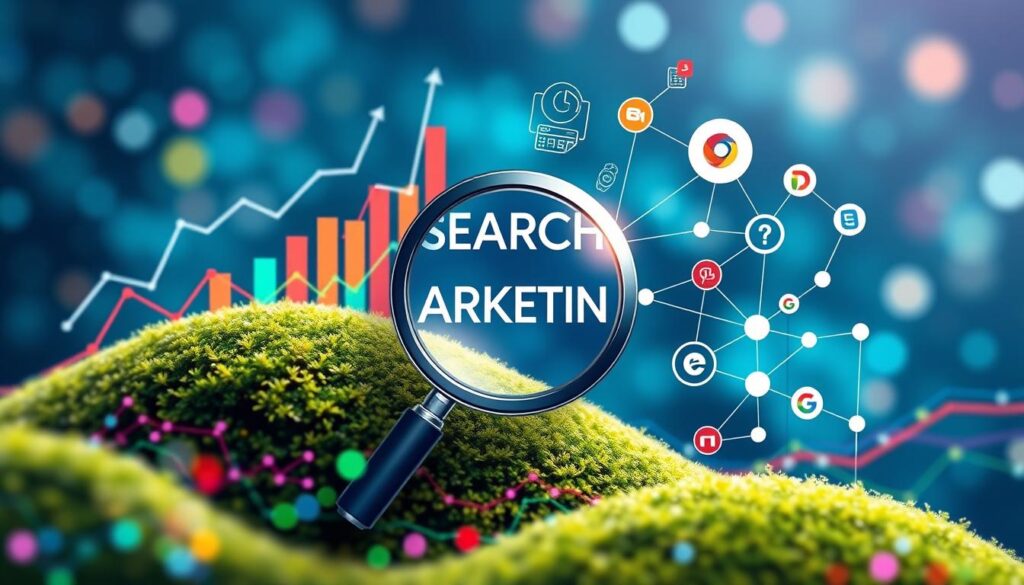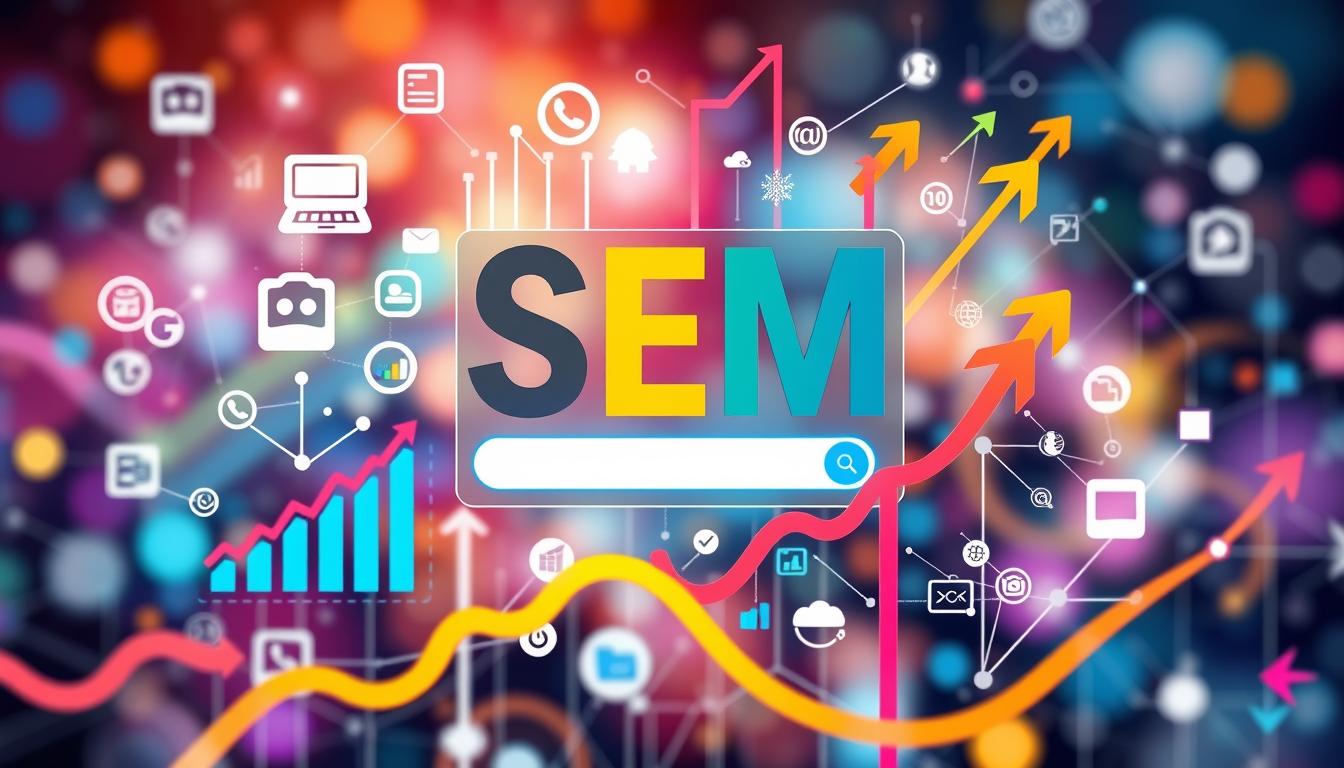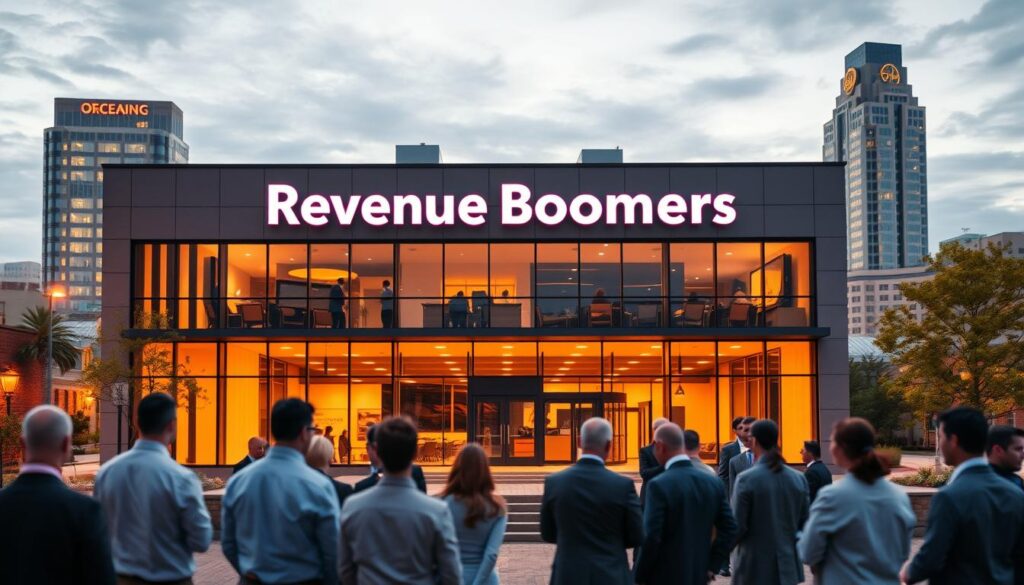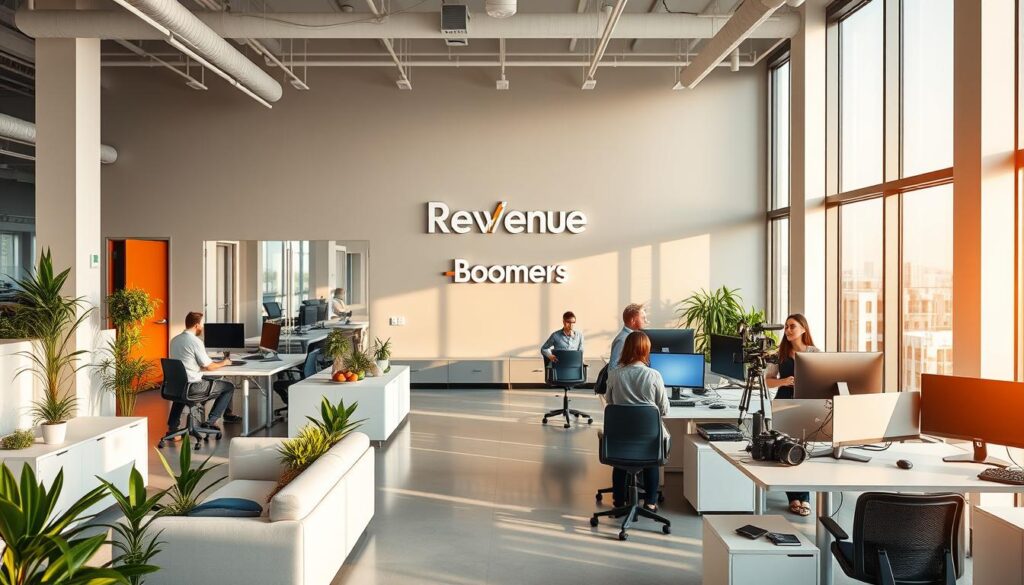Ever wondered why some businesses top search results while others don’t get noticed? It’s all about mastering Search Engine Marketing (SEM). In the modern, competitive online world, SEM is key for boosting visibility. It helps businesses reach out to potential customers via targeted ads.
Using tactics like pay-per-click (PPC) campaigns, brands can connect with people looking for what they offer. Today, over 70% of online shopping starts on a phone. Knowing how to use digital channels is more important than ever. SEM lifts businesses above the crowd. To really get SEM and use it for success, check out these detailed insights.
Key Takeaways
- Effective SEM marketing is vital for increasing online visibility and engagement.
- PPC campaigns allow businesses to target high-intent users actively seeking solutions.
- More than 40% of US ad spending is allocated to search advertisements.
- Proper keyword selection is essential for matching search intent.
- Integrating urgency and promotions in ads can significantly boost conversions.
- Consumer trust is a key factor in purchasing decisions, influencing SEM strategies.
- Mobile searches have surpassed desktop, emphasizing the need for mobile optimization.
Understanding Search Engine Marketing (SEM)
Search Engine Marketing (SEM) is crucial in digital marketing. It helps websites gain traffic through paid ads on search engines. SEM is key for quick visibility, unlike organic search methods. With billions of searches on Google daily, businesses can reach customers when they’re searching for related products or services.
Definition and Importance of SEM
SEM uses paid ads to boost company visibility on search result pages. It works well because of the many daily searches. It’s a smart investment for marketing budgets, letting advertisers target audiences with specific keywords. SEM is important for fast traffic, putting businesses ahead in search results and beating competitors.
Key Components of SEM
Success in SEM comes from several key components, including:
- Keyword Research: Finding high-volume keywords potential customers use is vital.
- Ad Auction Participation: Bidding on keywords involves considering Quality Score and relevance.
- Ad Copy Creation: It’s important to write ad text that attracts clicks.
- Landing Page Optimization: Ads need matching landing pages for better conversion rates.
Platforms like Google Ads help businesses with keyword bidding and campaign management. Ad extensions improve ad visibility, adding info like sitelinks and contact numbers. These elements together lead SEM campaigns to achieve lasting engagement and conversions.
How SEM Works to Enhance Visibility
Search Engine Marketing (SEM) uses paid ads to boost online presence. By buying ad space, businesses get to the top of search results. This brings quick traffic and connects companies with interested people through highlighted ads.
The Role of Paid Advertising in SEM
Paid advertising is key in SEM. Companies bid for ad spots on keywords related to their business. Good ads mix the right headlines, descriptions, and URLs to match what people are searching for. This strategy improves the chances of someone clicking on the ad, leading to more leads and sales.
Understanding Search Engine Results Pages (SERPs)
Knowing about SERPs helps a lot in SEM. When you search, you see different results, with paid ads usually at the top. These ads get more clicks and attention. You can track how well your ads are doing using tools like Google Analytics and Semrush. They help you fine-tune your approach for better results and more website visitors.

SEM Marketing Strategies to Boost Reach
To improve reach with SEM, businesses need a strong strategy. Key actions include targeting the right keywords, creating compelling ad copy, and using negative keywords wisely. These steps are crucial for maximizing the benefits of paid ads.
Targeting the Right Keywords
Winning with keyword bidding starts by finding the right keywords through research. Focusing on keywords that are popular but not too competitive helps attract the right visitors. Studying how users search ensures ads reach those genuinely interested in what’s offered. This approach is key for successful SEM, for both main and secondary keywords.
Creating Compelling Ad Copy
Making ad copy that stands out is essential for grabbing attention and getting clicks. It’s important to showcase what makes a brand unique. Using persuasive words and placing keywords wisely can make ads more visible and relevant. This can boost the chance of getting more conversions. For tips on ad copy, look at insights on SEM strategies.
Utilizing Negative Keywords
Negative keywords are vital for fine-tuning SEM tactics. They help keep ads from showing on unrelated searches, saving ad budget. This method ensures spending focuses on users more likely to buy. It makes campaigns more effective overall.

Leveraging PPC Campaigns for Maximum Impact
PPC campaigns are key in digital marketing for getting good results. Advertisers pay only if users click their ads. This makes it a budget-friendly way to get more visitors. With smart budget use and bidding, businesses increase their presence and meet their goals.
Understanding Pay-Per-Click (PPC) Dynamics
PPC helps businesses become more visible, especially on platforms like Google Ads. Advertisers can target specific people. This means ads reach those likely to be interested, improving click-through rates (CTR).
Setting a Budget and Bidding Strategy
Setting a budget is key for PPC success. Deciding what to spend per click affects where ads appear and their success. You can bid manually or use automated methods. Each has its benefits depending on your goals. Watching your spending ensures you use your budget well, for the best returns.
Measuring and Optimizing PPC Campaigns
It’s important to measure PPC to keep improving. Metrics like click-through rates and conversion rates show if campaigns work. Tools like Google Analytics track what users do after clicking ads. This helps fine-tune strategies. Staying focused and working together keeps campaigns on track.
| Platform | Cost-Effectiveness | Target Audience |
|---|---|---|
| Google Ads | High reach and visibility | Broad audience |
| Microsoft Advertising | Lower cost-per-click | Desktop users |
| Facebook Ads | Advanced targeting options | Defined user interests |
| Instagram Ads | Effective for younger audiences | Engaged social media users |
| LinkedIn Ads | Ideal for B2B marketing | Professionals and decision-makers |
| TikTok Ads | Creative engagement methods | Young audience demographics |
| Twitter Ads | Promotes real-time content | Active Twitter users |
Best Tools and Platforms for SEM Marketing
For top results in search engine marketing, choosing the right tools and platforms is key. These SEM tools make campaigns more efficient and increase online presence. With Google Ads, putting up pay-per-click (PPC) ads and targeting specific audiences is easy thanks to its wide range of options.
Essential SEM Tools for Optimization
There are many SEM tools that make managing campaigns, enhancing performance, and getting the best results easier. Some top tools include:
| Tool | Key Features |
|---|---|
| Optmyzr | Performance tracking, quality score tracker, geo heatmap features, automated bidding strategies. |
| Semrush | Keyword volume analysis, CPC data, competitor research tools. |
| Google Data Studio | Integrates data from 800+ sources for simplified reporting. |
| Microsoft Clarity | Captures user interactions via heatmaps and session recordings. |
| SpyFu | Dives into 13 years of Google data for competitive analysis. |
| Google Keyword Planner | Researches keywords, offers monthly search estimates and costs for Google Ads. |
| HubSpot Ads | Targets specific audiences through tailored ad content. |
Overview of Google Ads and Alternatives
Google Ads helps marketers show ads on Google search and partner websites. This platform allows for detailed adjustments and performance reviews. Besides Google Ads, there are others like Bing Ads and social media for broader reach. These offer distinct tracking and analytics for effective paid promotions.
Using the best SEM tools makes advertising easier and boosts marketing strategies. With the right knowledge and tools, businesses can see great results. Learn about SEM costs here.
Why Combining SEO and SEM is Essential for Success
Today, companies need to use both SEO and SEM to stand out online. By mixing the two, businesses make a complete marketing plan. This plan improves visibility and draws in users.
Benefits of Integrating Organic and Paid Strategies
SEO and SEM together offer many perks. SEO raises your site’s rank by using the right keywords. SEM puts your ads at the top quickly through paid efforts. Together, they boost your site’s authority and ad success. Using both methods helps with:
- Increased Traffic: Attract more visitors from organic and paid channels.
- Brand Awareness: Get noticed more by showing up in several search spots.
- Higher Conversions: Encourage more sales with a well-rounded marketing approach.
Effective Budget Allocation between SEO and SEM
It’s crucial to spend your budget wisely on SEO and SEM. The right balance supports organic growth and gives rapid results with ads. When planning your spending, think about these points:
| Strategy | Budget Percentage | Expected Outcome |
|---|---|---|
| SEO | 60% | Long-term organic traffic growth |
| SEM | 40% | Immediate visibility and traffic |
Using SEO and SEM together can cut down on long-term ad costs. Good SEO makes a foundation for growth. It helps your Google rank, affecting how you appear on Yahoo and Bing too. This leads to a strategy that meets both current and future digital marketing needs.
Conclusion
Maximizing reach through effective SEM marketing is key for companies wanting to grow online. Understanding SEM, including paid ads and pay-per-click, helps businesses boost visibility. This allows them to draw in more of their target audience.
Integrating SEM with SEO creates a powerful digital marketing plan. SEM gets you quick visibility through paid searches. On the other hand, SEO improves your organic rankings over time. This combo boosts your site’s authority, leading to more growth and better conversions.
For companies aiming to stand out online, working with an expert agency like Revenue Boomers is smart. They provide custom strategies for SEM success. This helps in aligning SEM with your overall marketing, achieving standout results.






